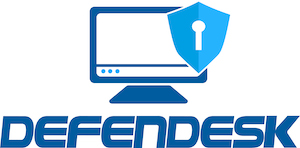A Guide To Selecting The Right Co-Managed IT Service Model

Outsourcing has become the strategic go-to for SMBs who want to focus their efforts on business growth, rather than the rigors of daily IT support. However, the growing importance, complexity and scope of IT, as a whole, has driven many companies to move towards an IT partnership or Co-Managed IT. In a Co-Managed IT model, an organization’s internal IT team collaborates with their Managed Service Providers to divide IT responsibilities based on skill gaps, time, among other considerations. Companies benefit by gaining access to experience and expertise it may not possess internally while having visibility and alignment with business/technology objectives.
When Should You Consider A Co-Managed Solution?
When your business experiences accelerated growth, the technology workload can quickly increase to the point where you find the IT Team overwhelmed which quickly creates production drops. Strategic alignment and Digital Transformation initiatives, effective and timely project management, access to enterprise-class tools, and security become major concerns as the IT team falls further behind. Co-management takes the burden off of your IT department so your they are able to do the tasks and projects they are highly skilled in. What are some of the critical table stakes for co-managed solutions for growing companies?
Project Management
Smaller businesses may have one or two IT staff on hand who are great at what they do but lack experience in project planning and management. When partnered with the right Managed Service Provider, your IT staff benefits from a lighter workload that allows them to focus on projects that help your business to grow. Outsourced project management gives your business access to experts who know how to plan and manage projects of all sizes.
Digital Transformation / IT Roadmapping
The creation of an IT strategy for a Mid-Market organization can be a huge challenge. Aligning agile short-term and long-term goals with the technologies needed to actualize them can be more than a small IT staff can handle. Working together with your MSP for IT road-mapping provides access to a team of experts that will immediately boost the productivity of your IT staff and pass the benefits of increased efficiency to faster business growth.
Enterprise Tools
When you work with the right MSP, you gain access to enterprise-class tools that provide your business with the same level of insight and service that large companies can provide for themselves. The best part is that you don’t have to make huge investments to develop a sophisticated IT team or software to do this. When you outsource, you gain immediate access to the same kinds of tools and services your business could not afford otherwise.
IT Security
It may be last in this section, but it certainly isn’t the least in importance. One of the critical areas of business operations is the security of its IT infrastructure and digital assets. SMBs and Mid-Market organizations often lack the resources and skill set necessary for implementing and maintaining an effective security strategy. Outsourcing your security needs to a reputable MSP / security services provider makes robust security much more than a pipe dream. With the right security partner, your business gains access to state-of-the-art technology and security experts who know how to keep your IT infrastructure and digital assets safe.
Outsourcing is about much more than just handing off a bunch of work to another business. It’s also about forming mutually beneficial partnerships that help both businesses grow.
Two Most Common Co-managing Scenarios Offered By IT Managed Service Providers
Model #1: Outsourced Helpdesk, Insource Escalation Resources
In this scenario, business partners with an MSP to provide everyday tech support while keeping escalation in-house. This allows your tech support experts to focus on resolving the toughest issues while your co-manage partner takes on the mundane helpdesk calls. This is a particularly effective model for companies that are spread out across multiple locations and time zones.
One of the greatest advantages of co-managed helpdesk services is the standardization of service across all of your company’s locations. Your business also gains the ability to reliably provide support services outside of normal business hours. When you have a professional, co-managed helpdesk strategy in place, you eliminate the need for one or more IT personnel working the graveyard shift waiting for someone to call.
Model #2: Outsource Infrastructure Management, Insource Tier 1 Helpdesk
This option is a great fit for a business that:
- Have over half of its employees at one location
- A handful of remote workers or offices that connect into HQ resources
- A remote work schedule that’s aligned with HQ time zone
In this model, your business outsources all of its IT infrastructure management while keeping first-line technical support in-house. You may have an IT staff that lacks the time and advanced skills necessary to provide advanced infrastructure support or the resources to plan and manage projects. Your business may also lack dedicated security resources to protect IT infrastructure and digital assets.
You may have a company culture where employees expect to be able to just walk down the hall to IT rather than calling over the phone. Outsourced IT infrastructure management is ideal for an organization that needs expert IT skills and experience to manage and secure IT infrastructure. This removes the burden of infrastructure management from your IT staff, freeing them up to provide first-rate, personalized help desk support to everyone throughout your organization.

Recent Comments